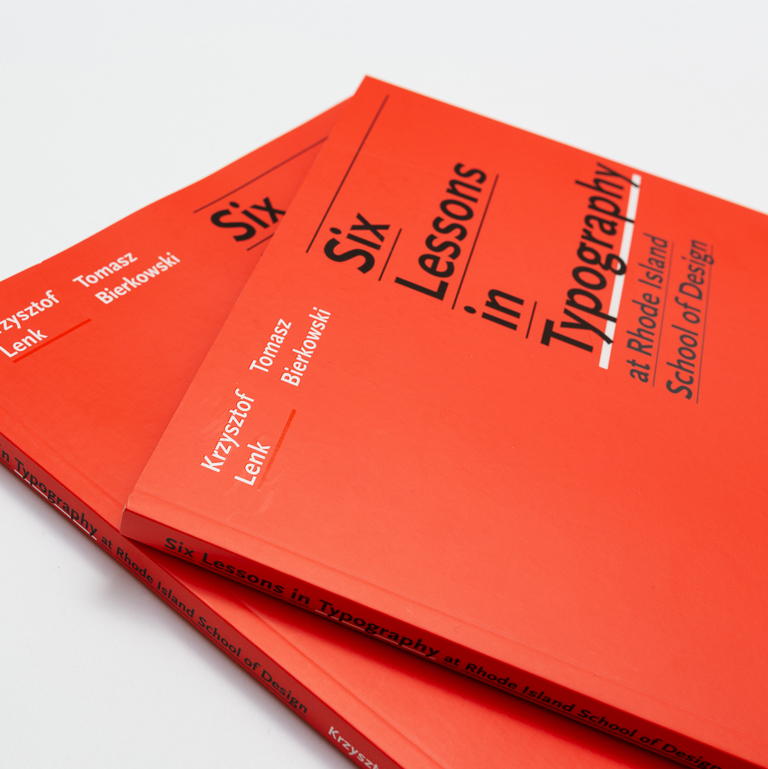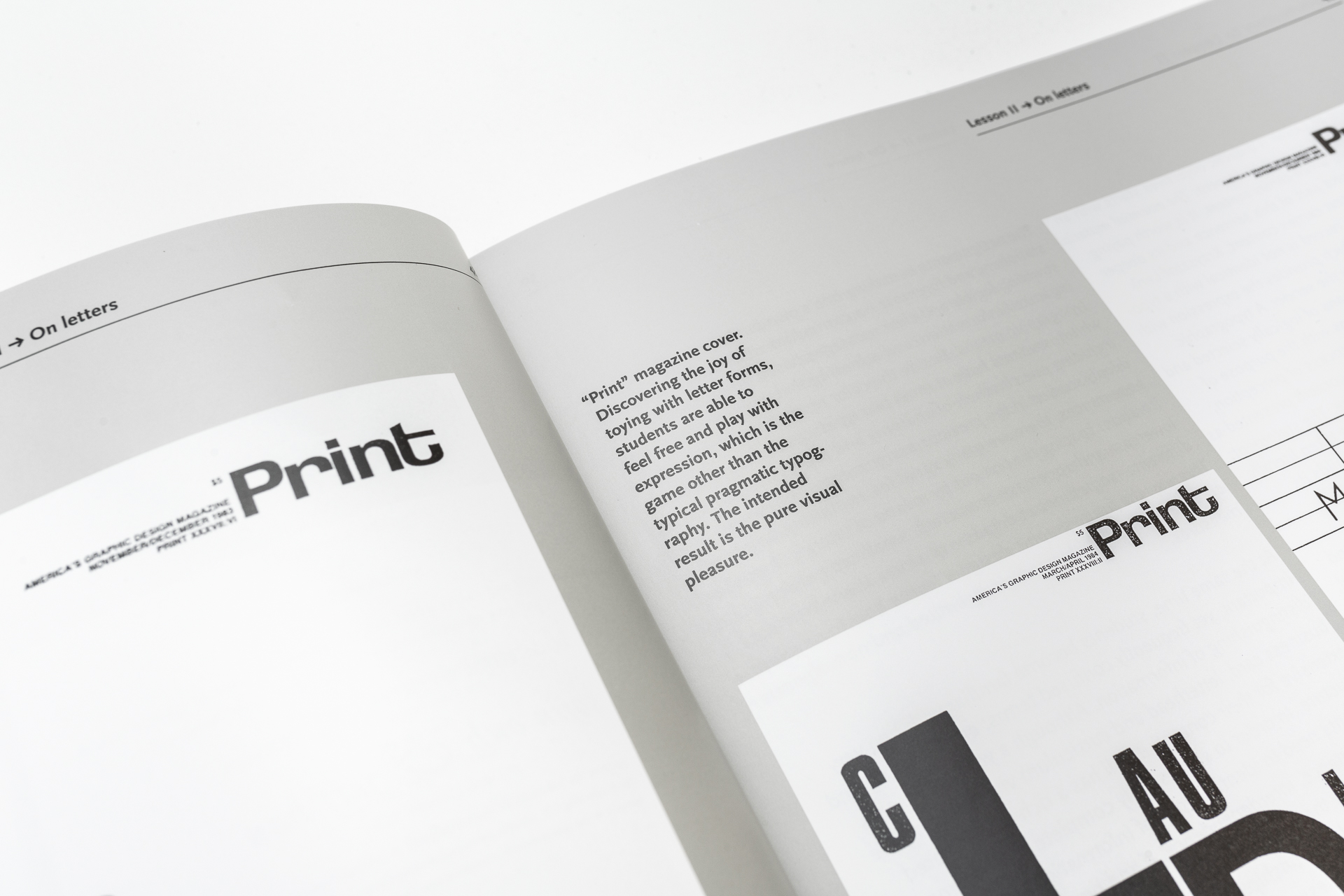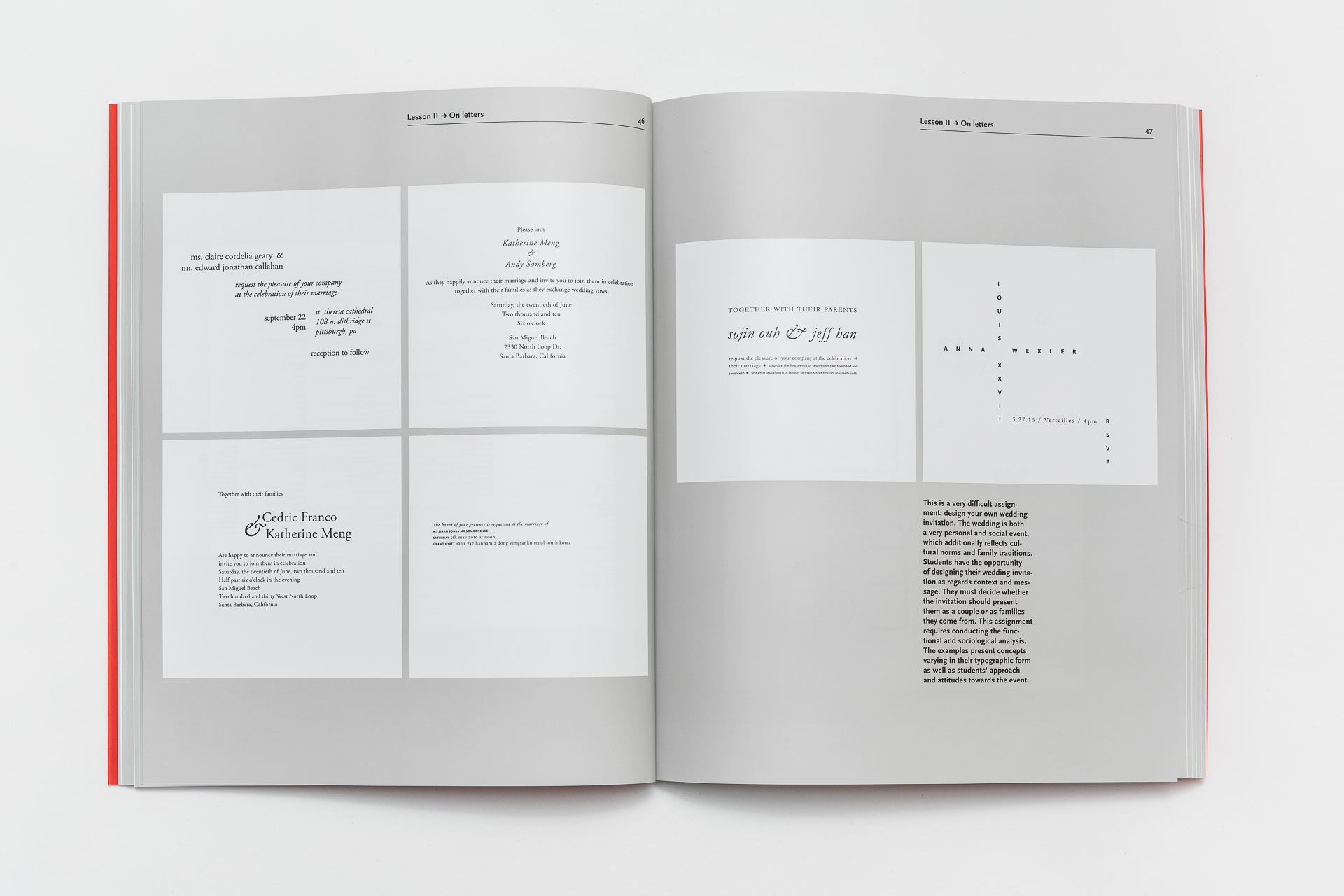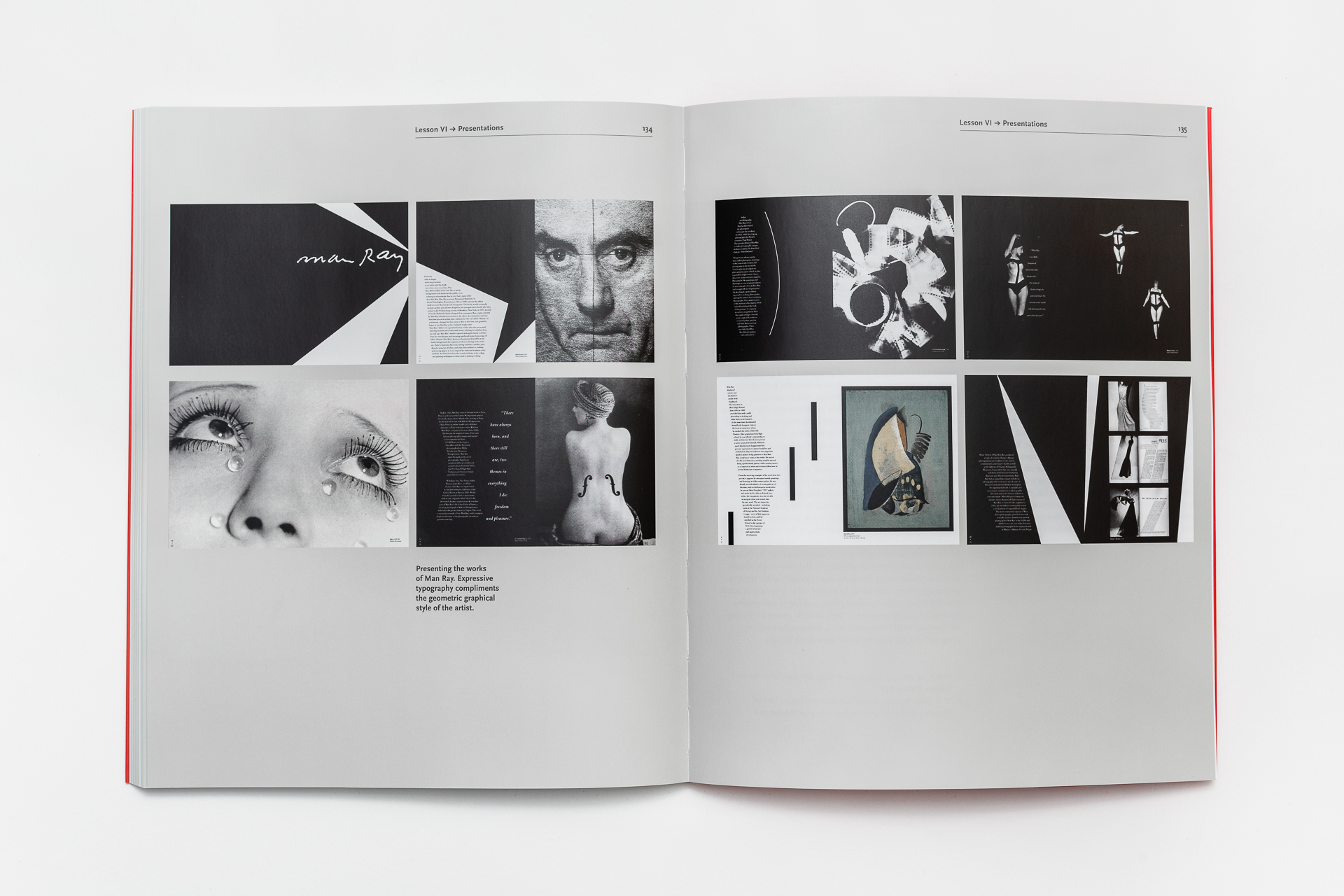
Six Lessons in Typography at Rhode Island School of Design
Krzysztof Lenk and Tomasz Bierkowski
2022, The Academy of Fine Arts and Design in Katowice
Krzysztof Lenk’s last book, published posthumously through a creative collaboration with prof. Tomasz Bierkowski, presents the teaching philosophy he developed during his tenure at Rhode Island School of Design.
Structured as a sequence of six lessons, his teaching establishes a foundational curriculum for typographers, graphic designers and visual communicators. Professor Lenk’s unique approach helps students become familiar with principles of visual perception and human cognition as they explore increasingly complex communication challenges. Each lesson presents an assignment, a selection of corresponding student work with Prof. Lenk’s commentary, and a short essay by Prof. Bierkowski illuminating the merits of the pedagogical approach.
“To teach typography is not to teach an aesthetic truth, but to develop a way of approaching the page, of understanding the relationship of form and content, of seeking the nature of meaning.”
– Krzysztof Lenk
Professor Tomaz Bierkowski, a critic, author, and head of the Chair of Graphic Design at the Academy of Fine Arts and Design in Katowice, Poland, began this collaboration with Prof. Lenk in the year before his passing. Bierkowski’s introduction to the book and commentary to each lesson elaborate our understanding and appreciation of the assignments presented by Krzysztof Lenk.
This book includes Krzysztof Lenk’s essay Typography is a State of Mind (page 15), originally published in “Spirals Journal” in 1991, presenting the pedagogical approach of the Graphic Design department at Rhode Island School of Design. This book expands upon that philosophy in great detail with clear instruction on how it is applied in the didactic process.
Jacek Mrowczyk, excerpt from the Foreword:
“Presenting typographic assignments designed by Prof. Krzysztof Lenk at the turn of the century, this book constitutes a brilliantly developed collection of universal principles regarding the design of layout, hierarchy of information, applying typeface, and the use of white space – from interglyph spaces to margins.”




